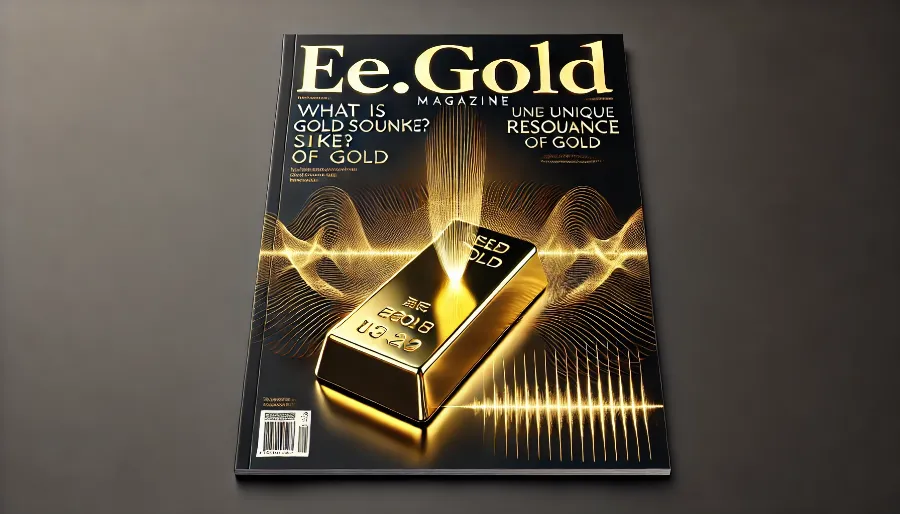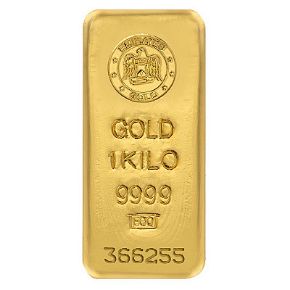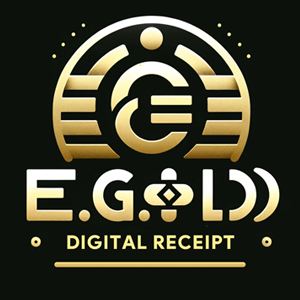
The Unique Sound of Gold
Gold has a distinct and beautiful sound that sets it apart from other metals. When tapped lightly, a genuine gold coin or bar produces a long, clear, and resonant "ping." This sound is often used as an informal way to verify the authenticity of gold, as its unique resonance cannot be easily replicated by other materials.
The Science Behind Gold’s Resonance
The unique sound of gold comes from its density and atomic structure. Gold is a very dense metal, with a density of 19.32 g/cm³, which affects the way it vibrates when struck. This high density allows for longer-lasting vibrations, resulting in a sustained and melodic ping. Additionally, the atomic arrangement in gold contributes to its ability to produce a pure, harmonic resonance.
How Gold’s Sound Differs from Other Metals
Gold’s sound is distinct compared to metals like silver, copper, or lead. While silver also produces a clear ping, it is typically higher-pitched and shorter in duration due to its lower density. On the other hand, counterfeit metals such as tungsten or brass may produce a dull, flat, or inconsistent sound because they lack gold’s unique properties.
Factors That Influence Gold’s Sound
Several factors can influence the sound of gold:
- Purity: Higher purity gold (e.g., 24K) produces a more resonant sound than lower purity alloys.
- Form: Coins and bars emit slightly different sounds due to their shape and size.
- Encapsulation: Coins in plastic holders or bars in sealed cases may have a muted sound.
- Environment: Background noise or damp conditions can affect how the sound is perceived.
Why the Sound of Gold Matters for Authenticity
The sound of gold has long been a tool for assessing its authenticity. Counterfeit gold made from materials like tungsten may visually mimic genuine gold but cannot replicate its resonance. This makes sound testing a valuable, non-invasive method for verifying gold without damaging it.
How to Test Gold Using Sound
Testing gold by sound is simple and effective:
- Clean the Gold: Remove any dirt or grease to ensure an accurate test.
- Suspend the Item: Hold the gold piece by its edge or place it on a sound-testing device.
- Strike Lightly: Tap the gold with a small metal object or a coin ping tester.
- Listen Closely: Pay attention to the clarity, duration, and pitch of the sound.
Tools and Methods for Gold Sound Testing
Coin Ping Testers
Coin ping testers are specialized devices that allow you to strike a gold coin safely while amplifying its sound. These tools are widely used by collectors and investors for quick authenticity checks.
Digital Sound Analyzers
Apps and devices that analyze sound frequencies can compare the sound of your gold item to a database of genuine samples. These are particularly useful for beginners and professionals alike.
Gold Sound Testing for Beginners
If you’re new to sound testing, start with common gold coins like the American Eagle or Canadian Maple Leaf. These coins are known for their consistent quality and are ideal for practice. Use a quiet environment to ensure you can hear the resonance clearly.
Real-Life Examples: Gold vs. Counterfeit Metals
A collector testing a suspicious gold coin may notice a flat, short sound instead of the expected clear ping. Upon further inspection, the coin is revealed to be made of brass, highlighting the importance of sound in identifying counterfeits.
Common Mistakes When Testing Gold by Sound
- Striking the gold too hard, which can damage the item.
- Testing in a noisy environment, making it difficult to hear the resonance.
- Using improper reference sounds, leading to inaccurate conclusions.
Historical Use of Gold Sound Tests
Sound has been used to test gold for centuries, dating back to ancient trade routes. Merchants relied on the unique resonance of gold coins to verify their authenticity during transactions.
Advanced Techniques for Sound-Based Authentication
Modern sound-based methods use tools like spectrograms to visually analyze the frequency and duration of a gold item’s resonance. This advanced approach is highly precise and often used by professional appraisers.
The Role of Density and Purity in Gold's Sound
The density and purity of gold are directly linked to its resonance. Lower purity gold alloys, such as 18K or 14K, produce a less distinct sound due to the inclusion of other metals. Pure 24K gold, on the other hand, delivers a richer and longer-lasting ping.
How Environmental Factors Affect Gold’s Resonance
Humidity, temperature, and surrounding noise can all impact the perception of gold’s sound. Testing in a controlled environment ensures more accurate results.
Myths and Facts About the Sound of Gold
Myth: All gold sounds the same.
Fact: The sound varies depending on purity, shape, and size.
Myth: You need special tools to hear gold’s resonance.
Fact: A simple tap can produce the sound, though tools improve accuracy.
Who Should Use Gold Sound Testing?
Gold sound testing is ideal for collectors, investors, and dealers who need a quick, non-invasive method to verify authenticity. It’s also useful for beginners learning about precious metals.
Gold’s Sound Across Different Forms (Coins, Bars, Jewelry)
Gold coins typically produce the clearest sound due to their uniform shape and size. Bars, being denser, have a deeper resonance, while gold jewelry may have a less distinct sound due to mixed metals and intricate designs.
Where to Learn More About Gold Sound Testing
Learn more through numismatic societies, online forums, or by attending precious metal expos where sound testing demonstrations are often held.
Gold Sound in Pop Culture and History
From pirate tales to treasure hunts, the sound of gold has been romanticized as a symbol of wealth and authenticity. It remains a fascinating aspect of the precious metal’s allure.
The Future of Gold Authentication Using Sound
As technology advances, sound-based authentication methods will become even more precise. AI-powered tools and blockchain-integrated databases may revolutionize how gold’s sound is analyzed and verified.
Frequently Asked Questions
What does gold sound like?
Gold produces a clear, resonant, and sustained ping when struck lightly.Can I test gold sound without tools?
Yes, you can perform a basic test by tapping gold with another metal object.Does the purity of gold affect its sound?
Yes, higher purity gold produces a richer and longer-lasting resonance.What’s the difference between gold and silver’s sound?
Gold has a deeper, longer ping, while silver’s sound is higher-pitched and shorter.Can counterfeit gold mimic the sound?
Most counterfeits fail to replicate gold’s exact resonance due to differences in density and composition.Are there apps for testing gold by sound?
Yes, several apps analyze the sound of gold and compare it to known samples.What if my gold doesn’t make a ping sound?
This could indicate a lower purity or counterfeit item. Consider further testing.Do environmental factors affect the sound test?
Yes, noise and humidity can influence your ability to hear the resonance accurately.Can gold jewelry be tested by sound?
It’s more challenging due to mixed metals, but certain pieces can still produce a recognizable sound.Is sound testing foolproof?
While highly effective, it’s best used alongside other authentication methods for complete accuracy.
NOTE
This Content is the copyrighted content of EE.GOLD. All rights are reserved. You are welcome to share or use our content only by including direct links to our website. Any other form of reproduction, distribution, or use without proper attribution is strictly prohibited.
This Content is intended solely for educational purposes. The information provided does not constitute financial or investment advice.
Please note that Digital Storage Receipt, Secure Storage Solutions, and Physical Gold Sales are the only services offered by EE.GOLD.
We strictly adhere to government regulations and are firmly against all illegal financial or investment activities globally.
For further inquiries, feel free to contact us through our official channels.










.png)

